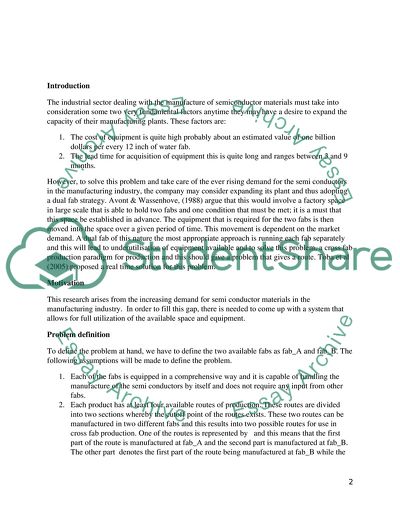Cite this document
(Route Planning for Two Wafer Fabs with Capacity-Sharing Mechanisms Essay Example | Topics and Well Written Essays - 1500 words, n.d.)
Route Planning for Two Wafer Fabs with Capacity-Sharing Mechanisms Essay Example | Topics and Well Written Essays - 1500 words. https://studentshare.org/engineering-and-construction/1848422-route-planning-for-two-wafer-fabs-with-capacity-sharing-mechanisms
Route Planning for Two Wafer Fabs with Capacity-Sharing Mechanisms Essay Example | Topics and Well Written Essays - 1500 words. https://studentshare.org/engineering-and-construction/1848422-route-planning-for-two-wafer-fabs-with-capacity-sharing-mechanisms
(Route Planning for Two Wafer Fabs With Capacity-Sharing Mechanisms Essay Example | Topics and Well Written Essays - 1500 Words)
Route Planning for Two Wafer Fabs With Capacity-Sharing Mechanisms Essay Example | Topics and Well Written Essays - 1500 Words. https://studentshare.org/engineering-and-construction/1848422-route-planning-for-two-wafer-fabs-with-capacity-sharing-mechanisms.
Route Planning for Two Wafer Fabs With Capacity-Sharing Mechanisms Essay Example | Topics and Well Written Essays - 1500 Words. https://studentshare.org/engineering-and-construction/1848422-route-planning-for-two-wafer-fabs-with-capacity-sharing-mechanisms.
“Route Planning for Two Wafer Fabs With Capacity-Sharing Mechanisms Essay Example | Topics and Well Written Essays - 1500 Words”. https://studentshare.org/engineering-and-construction/1848422-route-planning-for-two-wafer-fabs-with-capacity-sharing-mechanisms.


